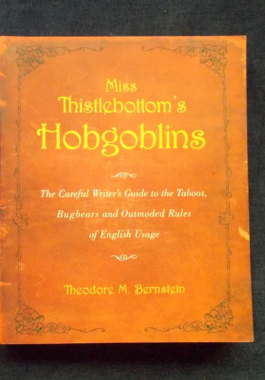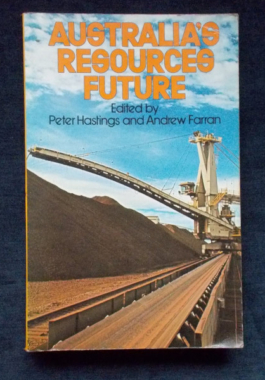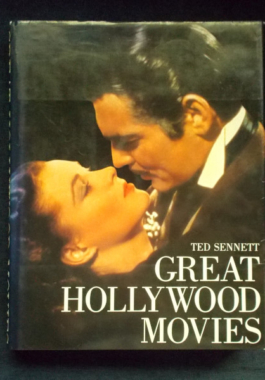-

Still Me: Christopher Reeve
$12.00When the first 'Superman' movie came out I was frequently asked 'What is a hero?' I remember the glib response I repeated so many times. My answer was that a hero is someone who commits a courageous action without considering the consequences - a soldier who crawls out of a foxhole to drag an injured buddy to safety. And I also meant individuals who are slightly larger than life: Houdini and Lindbergh, John Wayne, JFK, and Joe DiMaggio. Now my definition is completely different. I think a hero is an ordinary individual who finds strength to persevere and endure in spite of overwhelming obstacles: a fifteen-year-old boy who landed on his head while wrestling with his brother, leaving him barely able to swallow or speak; Travis Roy, paralysed in the first thirty seconds of a hockey game in his freshman year at college. These are real heroes, and so are the families and friends who have stood by them. The whole world waited for news as Christopher Reeve struggled for life on Memorial Day, 1995. On the third jump of a riding competition, Reeve was thrown headfirst from his horse in an accident that broke his neck and left him unable to move or breathe. From then until his death in 2004 he not only survived but fought for himself, for his family, and for the hundreds of thousands of people with spinal cord injuries in the United States and around the world. And he wrote Still Me, the heartbreaking, funny, courageous, and hopeful story of his life. Chris described his early success on Broadway opposite the legendary Katherine Hepburn, the adventure of filming Superman on the streets of New York, and how the movie made him a star. With dignity and sensitivity, he described the journey he has made - physically, emotionally, spiritually - as well as exploring his complex relationship with his parents, his efforts to remain a devoted husband and father, and his continuing and heroic battle to rebuild his life. The Man who could not move never stopped moving. -
 Douglas Adams wrote a story abut a world that was unexpectedly demolished by hideous creatures to make way for a hyperspace bypass. It was meant as a joke. After years of pondering the absurdities of life on other planets, Adams decided to ponder the life on this planet and the absurdities of what we are doing to it, as tree by tree and creature by creature, we demolish the world around us. Since this was a job he was hopelessly unqualified to do, he teamed up with zoologist Mark Carwardine and together they set off around the world with a succession of BBC sound engineers to find some of the world's rarest and most endangered creatures. Mark provided the knowledge, experience and expertise and Douglas provided the ability to point in trees and say, "Gosh, what's that?" a lot. The went to Indonesia to find the man-eating Komodo dragons; to New Zealand to find the largest, fattest and least-able-to-fly parrot; to China, to find the blinded and deafened river dolphins of the Yangtze; to Mauritius, to find the world's rarest and most sexually confused kestrel; and to Zaire, to find some of man's closest living relatives, the gorillas, the world's most endangered rhinos and some customs officials who out to be endangered but seem not to be.
Douglas Adams wrote a story abut a world that was unexpectedly demolished by hideous creatures to make way for a hyperspace bypass. It was meant as a joke. After years of pondering the absurdities of life on other planets, Adams decided to ponder the life on this planet and the absurdities of what we are doing to it, as tree by tree and creature by creature, we demolish the world around us. Since this was a job he was hopelessly unqualified to do, he teamed up with zoologist Mark Carwardine and together they set off around the world with a succession of BBC sound engineers to find some of the world's rarest and most endangered creatures. Mark provided the knowledge, experience and expertise and Douglas provided the ability to point in trees and say, "Gosh, what's that?" a lot. The went to Indonesia to find the man-eating Komodo dragons; to New Zealand to find the largest, fattest and least-able-to-fly parrot; to China, to find the blinded and deafened river dolphins of the Yangtze; to Mauritius, to find the world's rarest and most sexually confused kestrel; and to Zaire, to find some of man's closest living relatives, the gorillas, the world's most endangered rhinos and some customs officials who out to be endangered but seem not to be. -
 The old adage 'rules are made to be broken' has never been as well defended as here. Bernstein asserts that we have been indoctrinated with English usage rules that lack flexibility and evoke fear, confusion and frustration in writers. There are times when splitting an infinitive or ending a sentence with a preposition makes sense. Through a series of one-sided correspondences with 'Bertha Thistlebottom', an archetypal grade school English teacher, Bernstein addresses the community of rule-mongering sticklers who have tried to squeeze the English language into a set of inflexible rules and outmoded definitions that only serve to stifle its growth and paralyse writers. In addition to his letters to 'Miss Thistlebottom', there are scores of entries where Bernstein debunks the rules of yesteryear with wit and intelligence and illustrates how to write effectively - without the worry of hobgoblins.
The old adage 'rules are made to be broken' has never been as well defended as here. Bernstein asserts that we have been indoctrinated with English usage rules that lack flexibility and evoke fear, confusion and frustration in writers. There are times when splitting an infinitive or ending a sentence with a preposition makes sense. Through a series of one-sided correspondences with 'Bertha Thistlebottom', an archetypal grade school English teacher, Bernstein addresses the community of rule-mongering sticklers who have tried to squeeze the English language into a set of inflexible rules and outmoded definitions that only serve to stifle its growth and paralyse writers. In addition to his letters to 'Miss Thistlebottom', there are scores of entries where Bernstein debunks the rules of yesteryear with wit and intelligence and illustrates how to write effectively - without the worry of hobgoblins. -
 Australia is one of the richest countries, growing far more food that can be eaten, as well as a major source for minerals. To whom should Australia sell its food, minerals and energy? On what terms? How secure are Australia's relations with its major trading partners? How much does Australia's growth depend on immigration. These are just some of the themes covered in this book.
Australia is one of the richest countries, growing far more food that can be eaten, as well as a major source for minerals. To whom should Australia sell its food, minerals and energy? On what terms? How secure are Australia's relations with its major trading partners? How much does Australia's growth depend on immigration. These are just some of the themes covered in this book. -
 A comprehensive and informative guide to Australia';s fascinating, sometimes-deadly and very abundant wildlife. Understand how many of AUstralia's native and introduced creatures have the capacity to harm humans; identify potentially dangerous species of spiders and snakes; Avoid risking your safety and the safety of others by learning where these creatures can be found; and survive encounters with dangerous wildlife by knowing what to do in emergency situations. With fabulous colour photographs and a wealth of information.
A comprehensive and informative guide to Australia';s fascinating, sometimes-deadly and very abundant wildlife. Understand how many of AUstralia's native and introduced creatures have the capacity to harm humans; identify potentially dangerous species of spiders and snakes; Avoid risking your safety and the safety of others by learning where these creatures can be found; and survive encounters with dangerous wildlife by knowing what to do in emergency situations. With fabulous colour photographs and a wealth of information. -
 This profusely illustrated volume celebrates the legendary collaboration of Richard Rodgers and Oscar Hammerstein II. Filled with original performance photographs, set and costume designs, backstage candids and lively anecdotes, the book covers the team's best known works: Oklahoma! State Fair, Carousel, Allegro, South Pacific, The King And I; Me And Juliet; Pipe Dream; Cinderella; Flower Drum Song and The Sound of Music. Each are covered in-depth and aficionado and fan are brought to the understanding of why these shows were ground-breaking successes; how their work impacted their contemporaries and those who followed in their footsteps. With beautiful photographs.
This profusely illustrated volume celebrates the legendary collaboration of Richard Rodgers and Oscar Hammerstein II. Filled with original performance photographs, set and costume designs, backstage candids and lively anecdotes, the book covers the team's best known works: Oklahoma! State Fair, Carousel, Allegro, South Pacific, The King And I; Me And Juliet; Pipe Dream; Cinderella; Flower Drum Song and The Sound of Music. Each are covered in-depth and aficionado and fan are brought to the understanding of why these shows were ground-breaking successes; how their work impacted their contemporaries and those who followed in their footsteps. With beautiful photographs. -
 The late film historian Ted Sennett takes the reader on a trip from the beginning of film to the 1980s. He covers all genres: comedy, musicals, romances, westerns, adventure, war, mystery, horror, sci-fi, crime - even society's outcasts. There is also a section on those films that stand alone and those made from books and plays. With over 100 colour stills and images, this is really one for the serious film history buff.
The late film historian Ted Sennett takes the reader on a trip from the beginning of film to the 1980s. He covers all genres: comedy, musicals, romances, westerns, adventure, war, mystery, horror, sci-fi, crime - even society's outcasts. There is also a section on those films that stand alone and those made from books and plays. With over 100 colour stills and images, this is really one for the serious film history buff. -
 First published in 1870, this 15th edition of Dr. Brewer's dictionary has been revised and updated whilst retaining as much of the original Brewer' flavour' as possible. The editor admits to a little rewording and of course, updating of dates and figures where necessary. There's metaphors and sayings, special days and their origins, popes and royal lines...plenty here for the trivia buff or potential TV quiz kid.
First published in 1870, this 15th edition of Dr. Brewer's dictionary has been revised and updated whilst retaining as much of the original Brewer' flavour' as possible. The editor admits to a little rewording and of course, updating of dates and figures where necessary. There's metaphors and sayings, special days and their origins, popes and royal lines...plenty here for the trivia buff or potential TV quiz kid.




